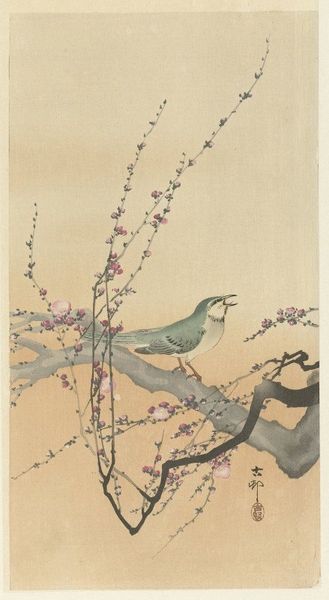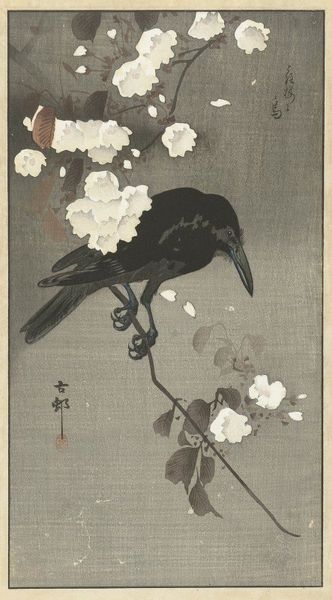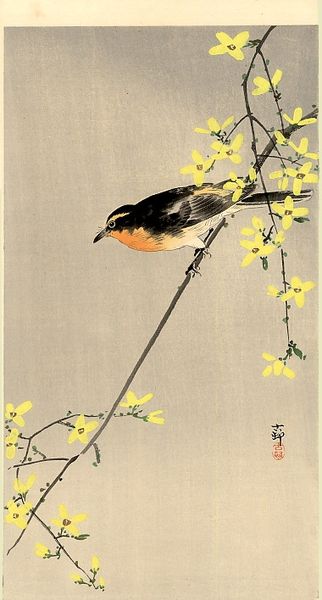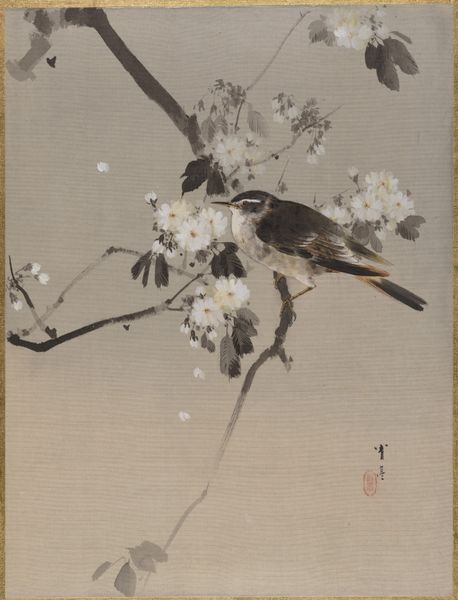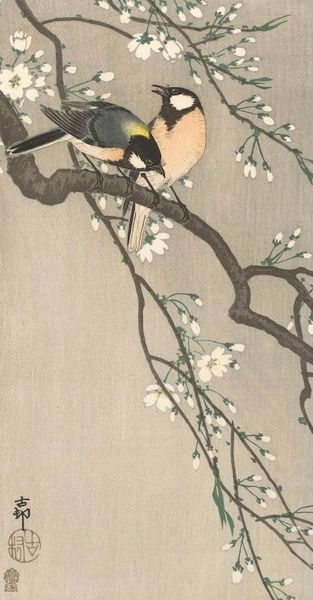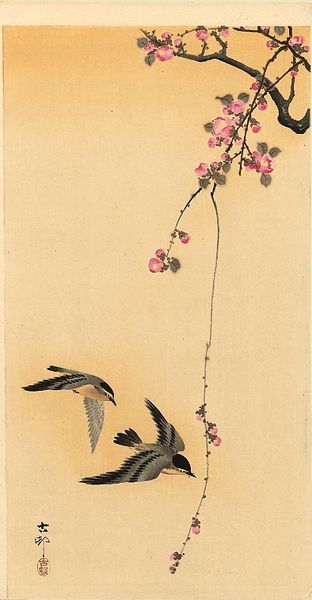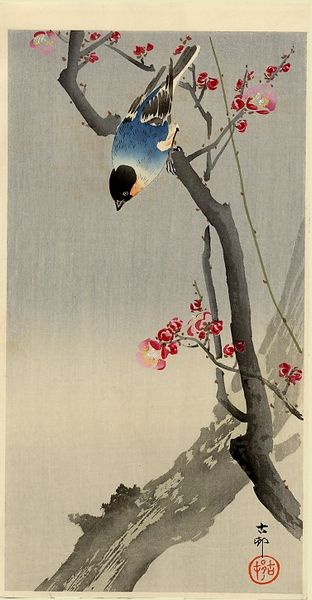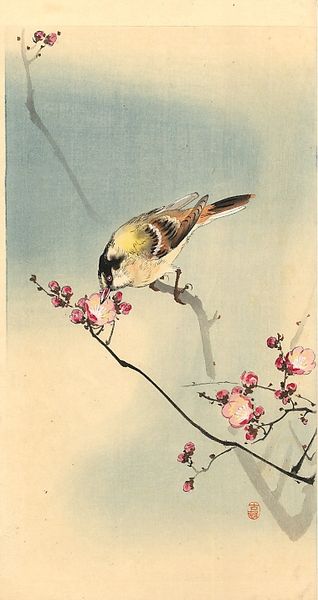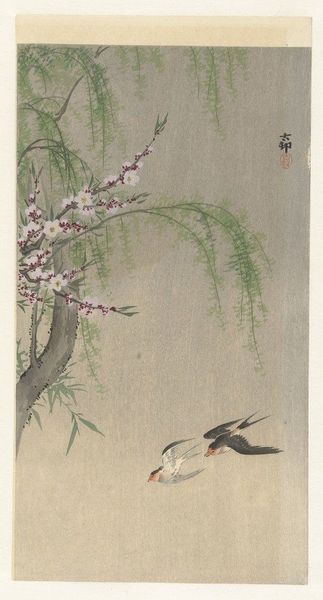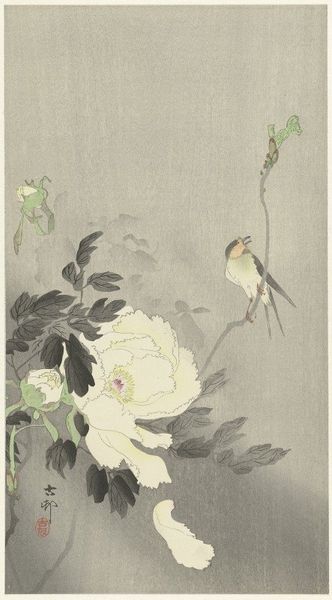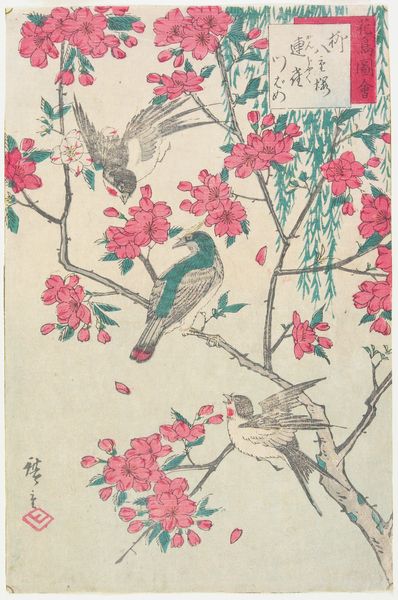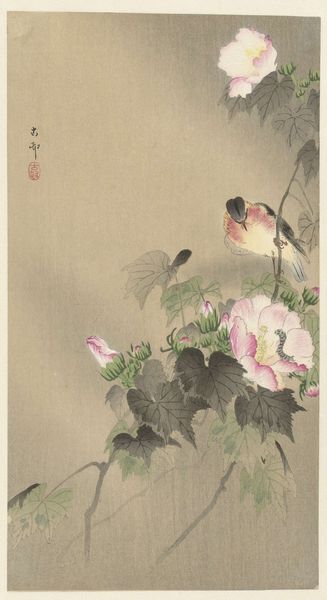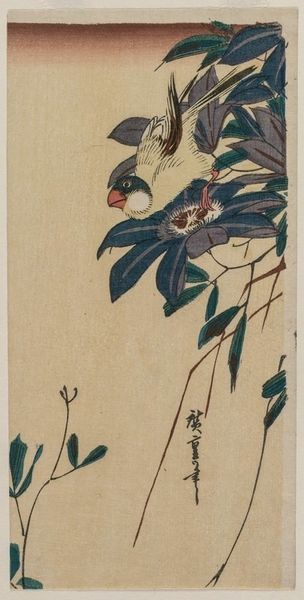
Copyright: Public Domain: Artvee
Editor: This is Ohara Koson’s "Chinese golden oriole on plum blossom branch," made sometime between 1900 and 1910. It's a woodblock print, and I’m really drawn to how simple and elegant it is, but it feels like there's more to it than just a pretty picture. What do you see in this piece? Curator: Immediately, I notice the materiality. We must consider the intensive labor that went into producing such a detailed print. Each color, each line, painstakingly carved into wood. The act of creation here emphasizes not just the artist, Koson, but the unseen artisans involved in the reproductive process of woodblock printing itself, who would translate Koson's vision to block. What social and economic conditions made this production possible? Editor: So you’re saying it's important to think about everyone involved, not just the famous artist? Curator: Precisely! Ukiyo-e prints like this became popular because they were relatively affordable. This brings us to the commodification of nature and its accessibility to a broader audience. We are invited to examine the consumption of idealized imagery, made available through the unique economics and materiality of printmaking. Consider also the relationship to craft versus 'high art', since for many in the West these prints would not even register as 'art'. Editor: That's a really interesting point. I hadn't thought about it that way. Curator: Can you elaborate on what strikes you as interesting about it? Editor: I never considered how affordable art could shift our perspectives around both art and labor, but considering both in the art-making is very interesting to me. Curator: It's fascinating how shifting our focus to the process and the materials reveals so much more about the artwork and its place in the world. Editor: I definitely learned to look at this print through a different lens. It's no longer just a bird on a branch. Thanks!
Comments
No comments
Be the first to comment and join the conversation on the ultimate creative platform.
